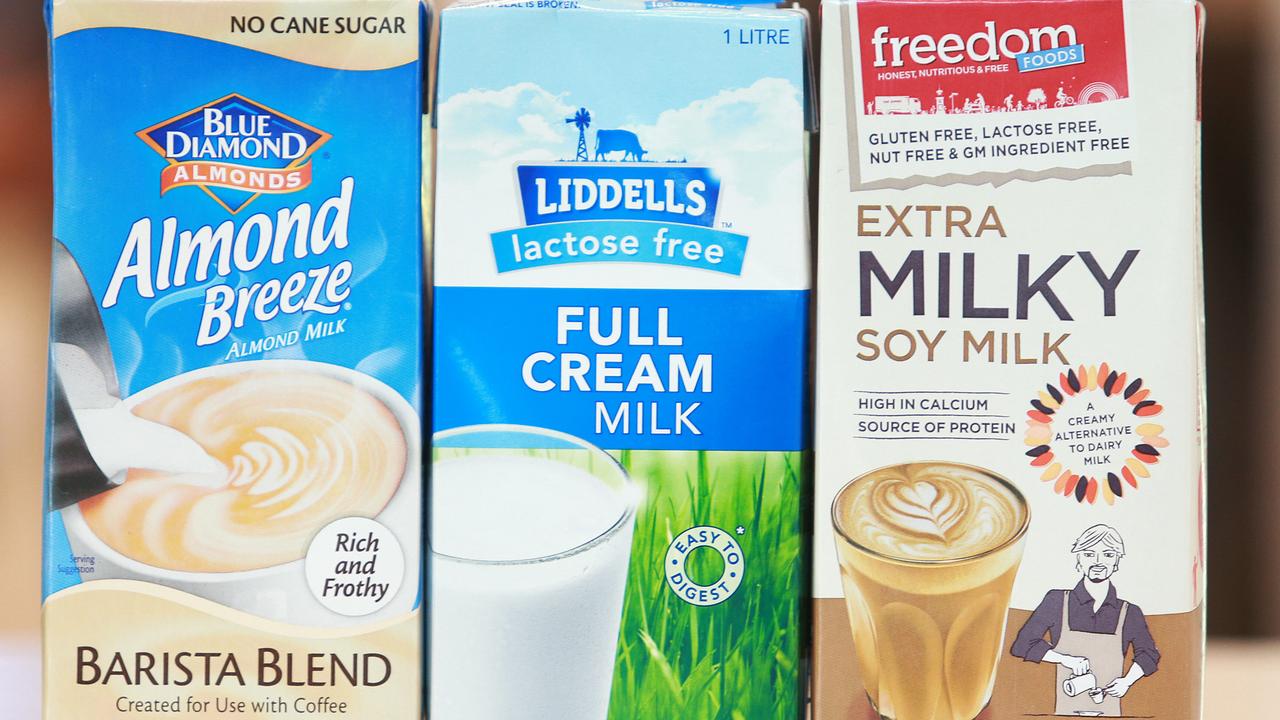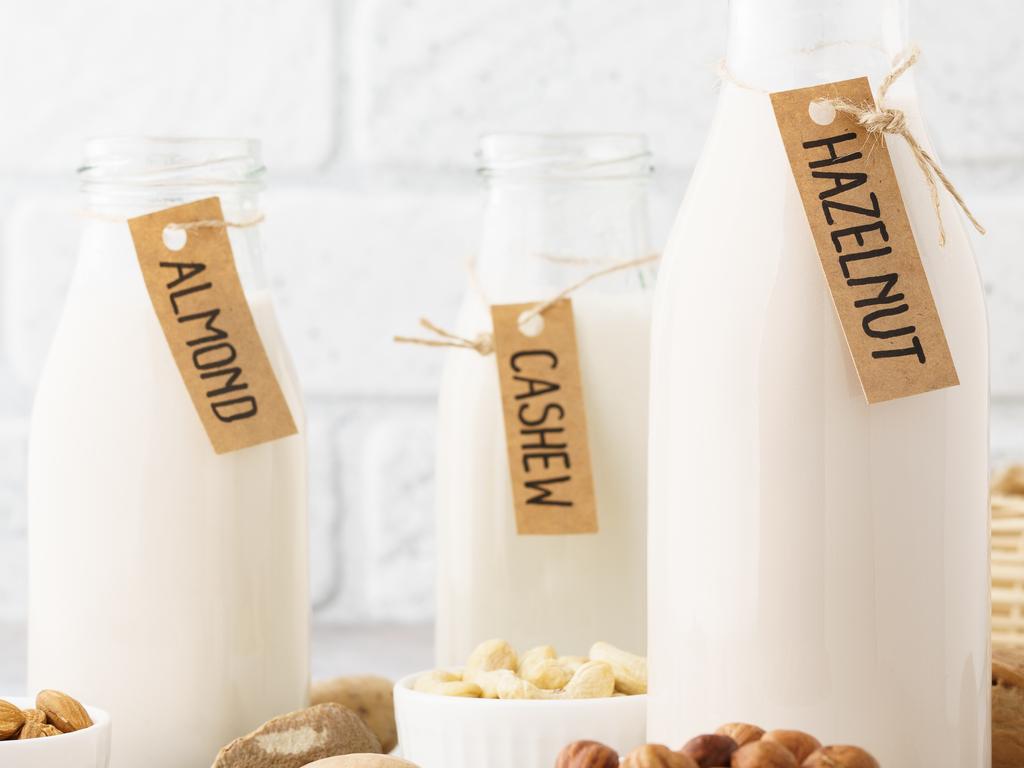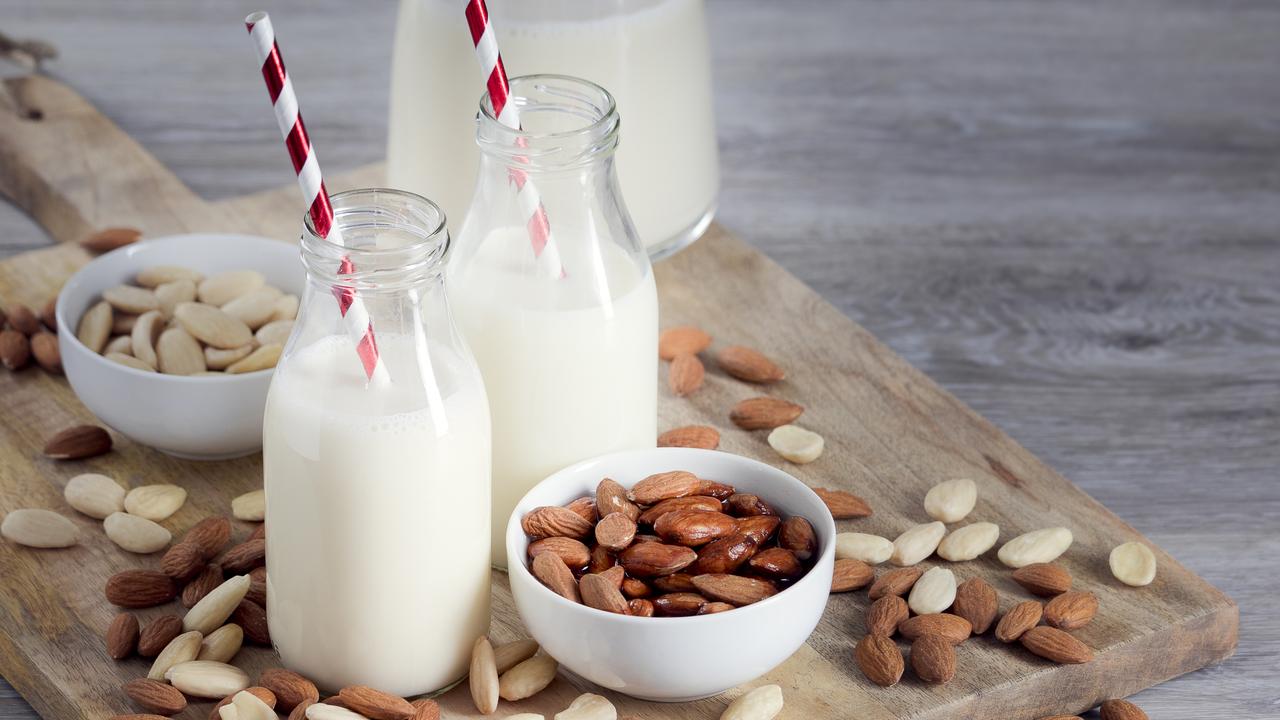Dr Zac Turner: Which cow’s milk alternatives are the best?
Cow, almond, oat, soy, coconut – the list of milk options is growing. Here, Sydney’s Dr Zac Turner reveals which one you should steer clear of.
QUESTION: Hi Dr Zac, I’m pretty chuffed because I’ve recently begun dating a very lovely woman. She’s an Instagram model type, loves a glamorous photo, has fun and takes care of her body. But there is one problem – she is nuts about almond milk.
You wouldn’t believe how many syllables are in her coffee order and she berates me whenever I drink cow’s milk. She tells me that alternative milk is healthier and more ethical but I have my doubts. What do you reckon, is alternative milk just marketing BS or is it really a better choice than good old cow’s milk? – Mark, 35, Newcastle.
ANSWER: When it comes to milk alternatives, I feel your pain. The long-life milk section of the supermarket aisle has become increasingly confusing over the last few years as more alternative milk options become popular.
RELATED: The brekkie item that makes you fat

You first need to appreciate there are many people who consume these alternatives because they can’t drink cow’s milk – they are lactose intolerant. I will explain more about that later.
But more than ever before I’m now being asked by patients who aren’t lactose intolerant whether they should switch to milk alternatives.
For a start, a lot of the confusion would be eliminated if there was a rule that milk can only be called milk if it is a white liquid which comes from a female mammal! That being said, these ‘female mammal derived milks’ have very different nutrient and vitamin profiles, and promote different benefits.
By putting these alternative nut, seed and legume-based drinks in the same category as milk, we are assuming they should have similar nutrient values. I think this is wrong because cow’s milk is not the same as these. They may look and taste similar, but they are ultimately coming from one type of product, and on their own are inferior in regards to nutritional value and how our body breaks them down.
RELATED: Doctor reveals how often we should poo

Cow’s milk is often toted as having the best source of fats, protein, and micronutrients mostly due to its bioavailability (your body’s ability to absorb and process). Since it is an animal protein, most humans can absorb these nutrients effectively. Most alternative ‘nut drinks’ are usually pumped with additional protein and calcium to match cow’s milk’s nutritional benchmark.
You need to be careful because many are also pumped full of sweeteners, which is easy to dodge in the supermarket aisle by reading the ingredients list, but a lot harder when you are visiting your local cafe. Next time your girlfriend or partner orders a multi-syllable coffee, ask the barista which alternative milk brand they are using and if it has sweetener in it or not. You’d be surprised how many cafes use sweetened ‘nut drinks’ to make their coffee taste better.
And for those who use their ‘nut drink’ choice as a badge of environmentalism, I recommend they research the damage some alternative choices can do. The biggest offender is almond milk. One almond kernel requires 12-litres of water and the almond industry has been linked to having a detrimental effect on bee populations. I recognise the cow’s milk industry is also bad with only a few ‘happy cow’ outliers.
RELATED: Doctor reveals trick to losing 10kg

I also appreciate dairy milk is not possible for those with a lactose intolerance. This is caused due to a deficiency of the enzyme lactase in the digestive tract. Lactase is responsible for breaking down the milk, which is why those who don’t have it simply flush it out straight after consuming it.
Alternative choices are a necessity for these people, which is why I’ve made a ranking of some alternative nut, seed and legume drinks from best to worst.
SOY
Soy drink ranks highly on my list, and while it has a few detractors especially around how it is stored, it has a similar amount of protein to cow’s milk. It also has half the amount of calories, fats and carbohydrates, and is one of the few plant-based sources of high-quality complete proteins, which provide essential amino acids.
OAT
Oat drink comes in second on my list due to its high beta-glucan levels, low environmental impact and because it’s the creamiest option most similar to the taste of cow’s milk. It contains half the amount of protein and fat of cow’s milk but has high levels of beta-glucan which is a type of soluble fibre that binds to cholesterol, reducing absorption. For those wanting to lower their cholesterol levels, they should drink more of this.

ALMOND
Almond drink is the absolute worst – no matter how long my list is, it will always be at the bottom. Almond milk is usually flooded with sweeteners and it’s exceptionally low in protein and other nutrients. I do recognise some brands are refortified with nutrients.
It’s redeeming quality is the low carb levels but apart from that I see no upside to this choice. As I said previously, the almond milk industry is dealing a lot of damage to our fragile environment.
Mark, I wouldn’t go so far as to say your girlfriend’s milk obsession is “BS” but I do think there is merit in trying to get her to delve deeper into understanding her choices and which one suits her diet the most. Research is key and you should always avoid food fads!
Dr Zac Turner has a Bachelor of Medicine and Bachelor of Surgery from the University of Sydney. He has worked as a Registered Nurse, both in Australia and internationally and is also a qualified and experienced biomedical scientist. | @drzacturner




